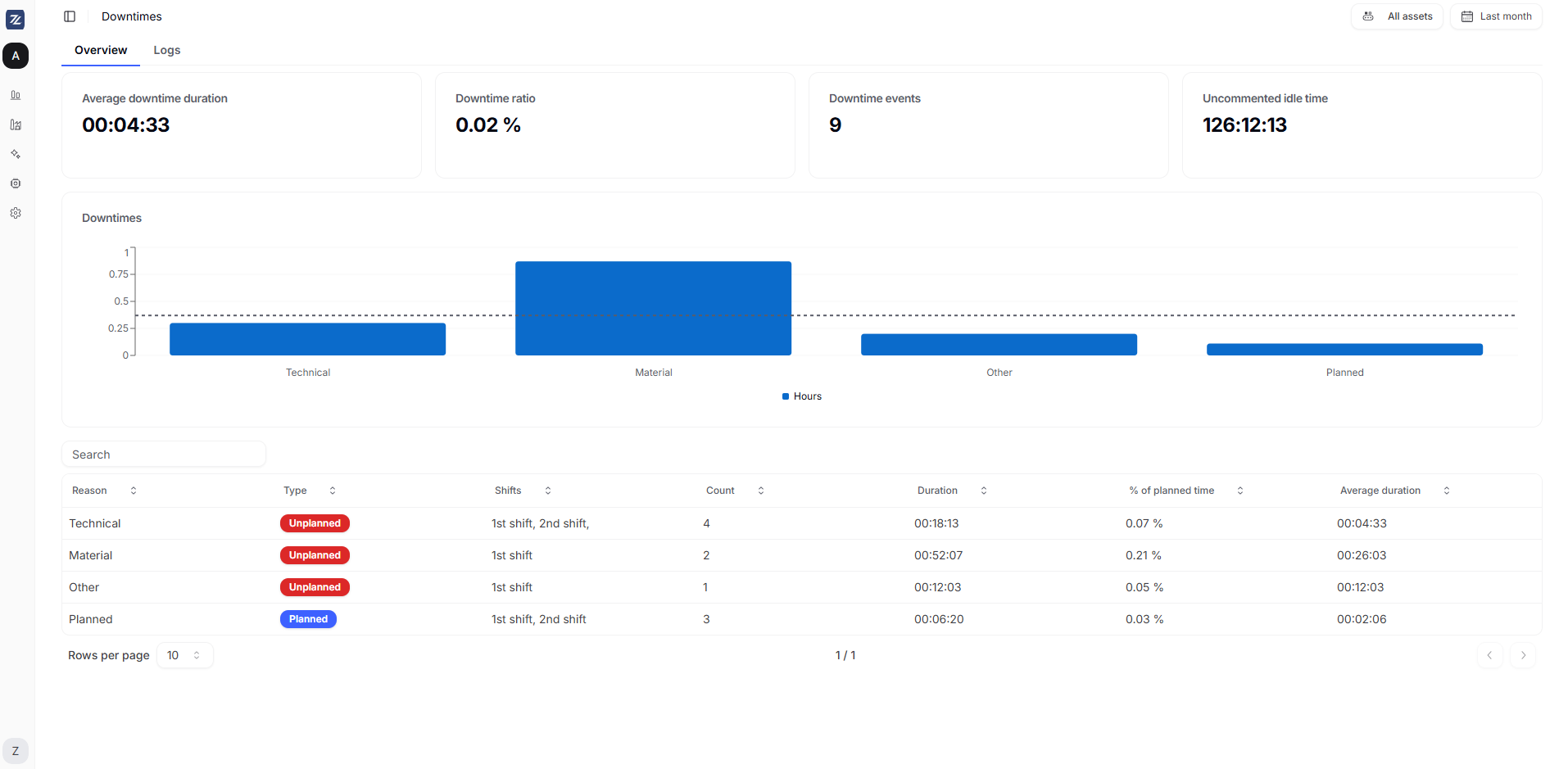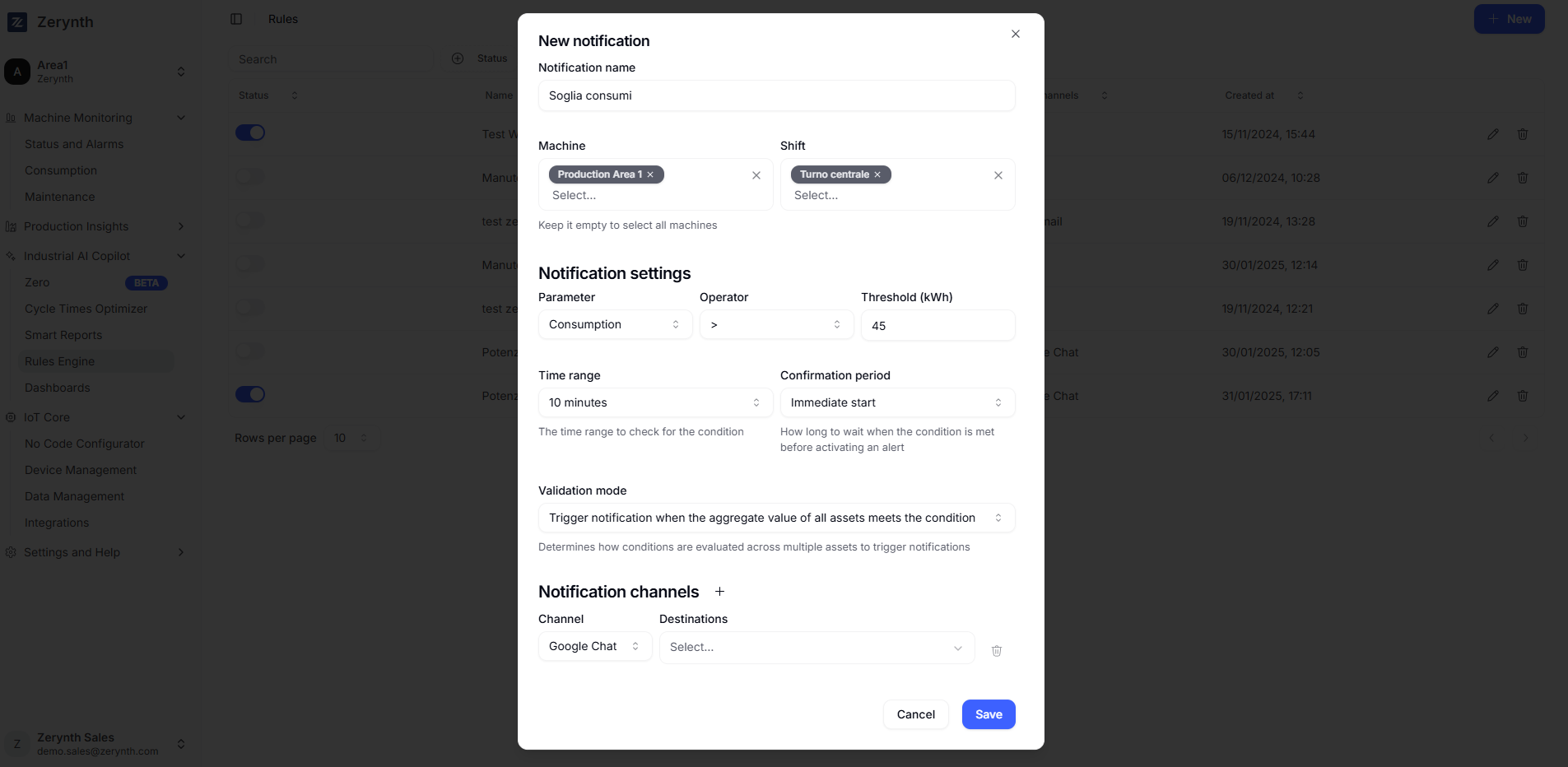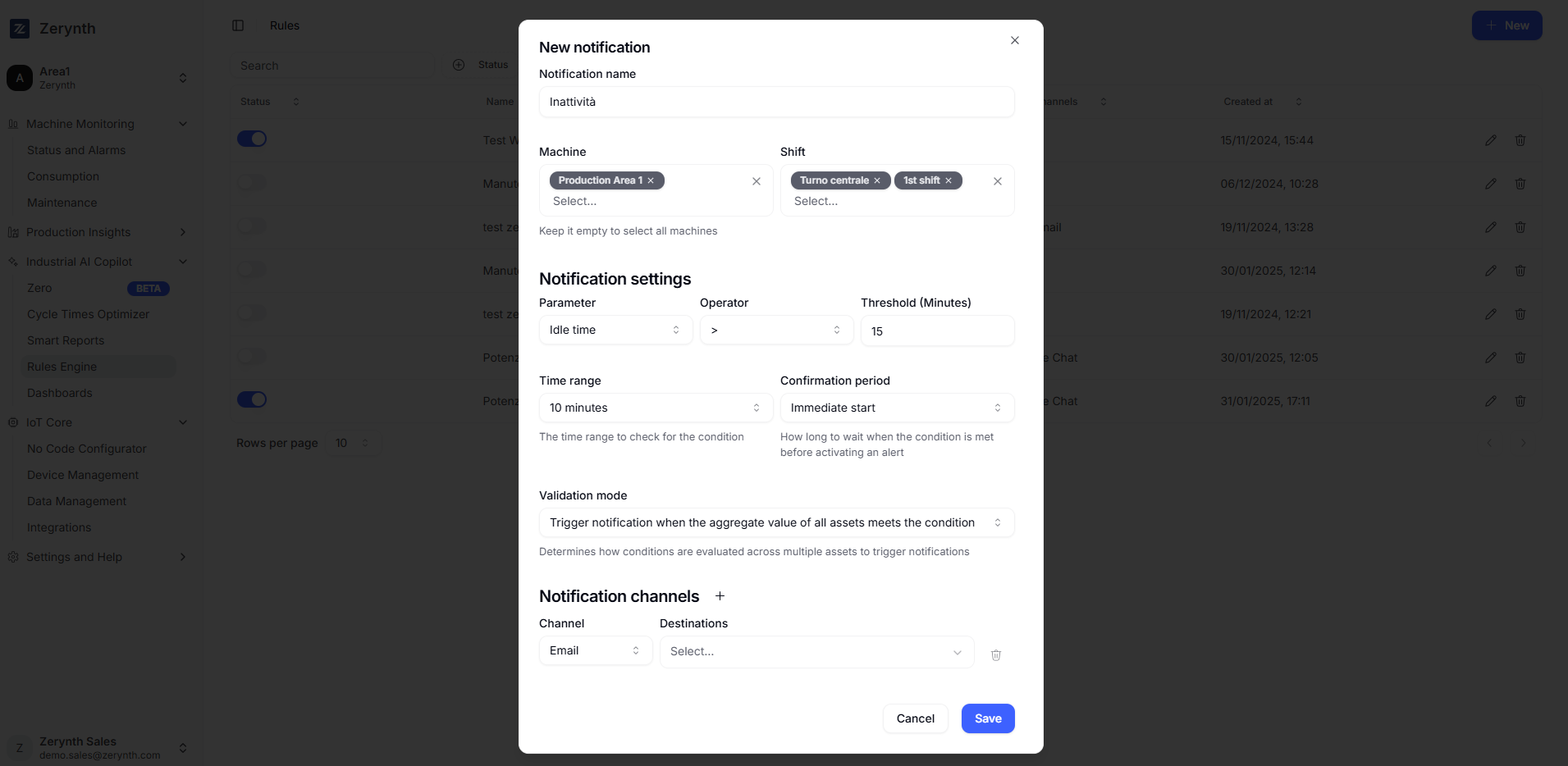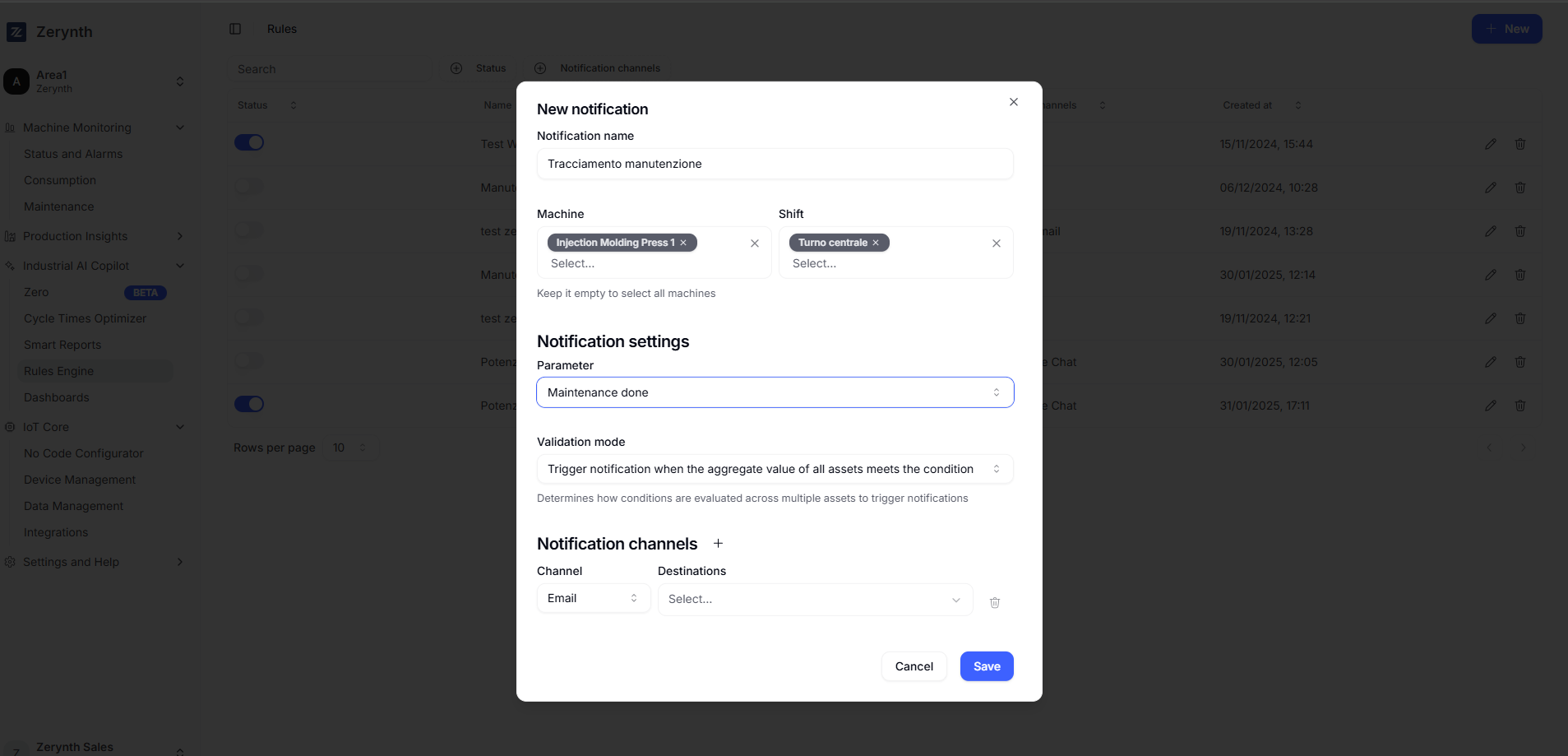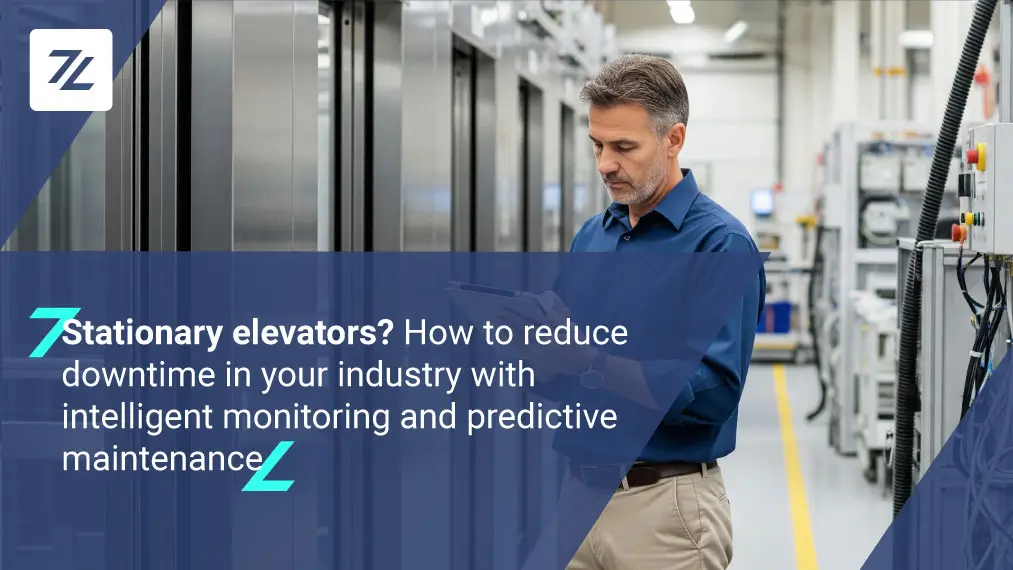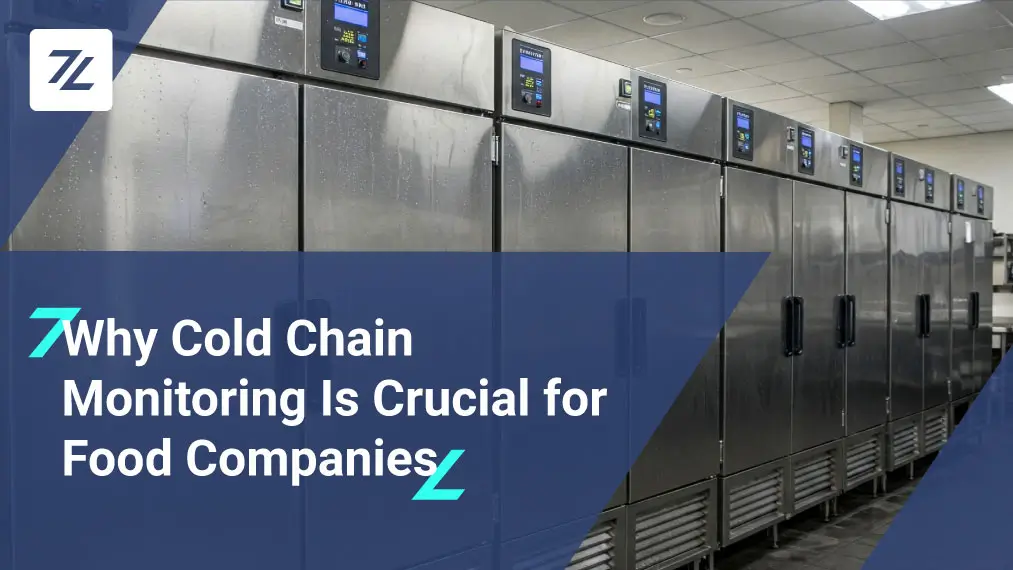Machine downtime, idle operations, high costs, and unreliable efficiency KPIs are some of the main obstacles to productivity in manufacturing companies.
Continuous and accurate machine status monitoring, combined with real-time data analysis, is essential to understand the actual operating conditions of equipment. This simplifies performance control and enhances collaboration between maintenance and production teams.This approach enables timely interventions to reduce downtime, optimize the overall efficiency of the production line, and preserve machinery health over the long term.
In this blog post, we will explore the importance of effective industrial machinery maintenance management and how the Zerynth platform provides proactive support to optimize the entire process.
The Key Role of the Maintenance Technician and the Importance of Timely Reporting
In any production environment, the maintenance technician plays a crucial role in ensuring operational continuity and equipment efficiency. Their main goal is to minimize machine downtime, avoiding unexpected interruptions that could compromise productivity and profitability.However, technicians often lack structured data and must manually interpret information to plan and schedule interventions effectively.
For this reason, it is vital for maintenance personnel to have access to intuitive digital tools for real-time data analysis, enabling them to receive timely notifications about inefficiencies and failures to act quickly. Additionally, to fully leverage these solutions, it is essential to learn how to use monitoring and maintenance platforms through dedicated training programs.
The evolution of IoT technologies and artificial intelligence has made machine and plant health monitoring increasingly advanced. This allows for the detection of anomalies and the prevention of failures through intelligent, customizable alarm systems.A proactive and data-driven maintenance approach, supported by digital tools and proper training, becomes a key factor in optimizing production processes and ensuring efficient long-term equipment performance.
Advanced Alarm Configuration on the IoT Platform
A proactive maintenance system must integrate with advanced monitoring and alarm tools to ensure effective and timely operational control.It is crucial that management platforms allow for the definition of customizable alarm conditions tailored to the specific behaviors of monitored machinery, enabling the prompt detection of anomalies and inefficiencies.
To improve alarm management, digital tools should offer a clear and intuitive interface with visual signals directly on operational dashboards and targeted notifications for relevant teams. The ability to configure recipient groups for automatic alert distribution optimizes communication, prevents delays, and ensures quick, efficient responses.
Configurable alarm conditions should cover a wide range of scenarios, such as prolonged machine inactivity, inefficient resource usage, exceeding critical energy consumption thresholds, or high rates of defective cycles. Monitoring deviations in production times compared to ideal parameters is also essential to prevent operational inefficiencies and maintain product quality.
The adoption of advanced digital tools not only enhances the ability to detect and manage issues in real-time but also fosters a data-driven approach to maintenance. This enables companies to make more informed, strategic decisions to optimize plant performance.
How to Set Rules and Notifications in Zerynth
To implement an effective alarm system, it is essential to correctly configure rules on the platform using the powerful AI-based rule generation tool. This ensures precise monitoring and optimized maintenance management.The portal allows for the definition of machine and process groups for detailed performance analysis, enabling the detection of anomalies before they negatively impact production. Additionally, by configuring derived KPIs, it is possible to assess operational performance and promptly identify deviations from optimal parameters.
A critical aspect is the ability to set personalized thresholds for each critical parameter, adapting them to the company’s specific production needs. The activation of automated push and email notifications for designated recipient groups ensures an immediate alert system, allowing for quick intervention when necessary.
Thanks to these features, companies can achieve more granular production control, improve maintenance management, and reduce the risk of unexpected downtime.
- Energy Consumption Monitoring
Through the platform, it is possible to configure alarms and notifications to effectively monitor energy consumption. One of the most relevant parameters is power: by setting a maximum absorption threshold, the system can automatically generate an email or webhook notification whenever the value exceeds the predefined limit.
To avoid unnecessary alerts caused by temporary spikes, the alarm is triggered only if the threshold is exceeded for a defined period (e.g., 10 consecutive minutes). This approach helps identify inefficiencies due to abnormal overloads, prevent failures, and optimize energy consumption in the plant.
Alarm configuration is highly flexible: rules can be applied to specific machines, with notifications triggered either for individual devices or for the entire monitored group. This ensures precise, timely control, adaptable to the company’s operational needs.
- Downtime Mapping
Another important use case involves managing machine downtime. It is possible to configure rules related to machine inactivity outside of scheduled breaks.For example, if a machine remains idle beyond a predefined threshold, a notification is sent to the production and maintenance teams to investigate the cause via Google Chat, webhook, or simply by email.This system can significantly reduce time lost due to unplanned interruptions, thereby improving overall productivity.
- Maintenance Activity Tracking
For maintenance purposes, it is important to have a notification system linked to operators’ intervention activities. When a technician completes a task, they must log it on the platform, which automatically sends a notification to the admin or maintenance manager to confirm the intervention has been carried out.For this process to be effective, it was crucial to detail information related to operators, work shifts, and preventive maintenance plans. This has improved the traceability of interventions, reducing the risk of errors or missed maintenance activities.
Learn More with Our White Paper
In conclusion, it is essential for industries to implement an efficient industrial equipment maintenance system that enables proactive monitoring, timely interventions, and data-driven decision-making. By adopting advanced IoT technologies and AI-powered tools, companies can optimize production efficiency, reduce operational costs, and ensure long-term sustainability.
Discover more insights and best practices in our comprehensive white paper on proactive maintenance strategies.
Share This Story, Choose Your Platform!
Follow Zerynth on
Latest Posts
